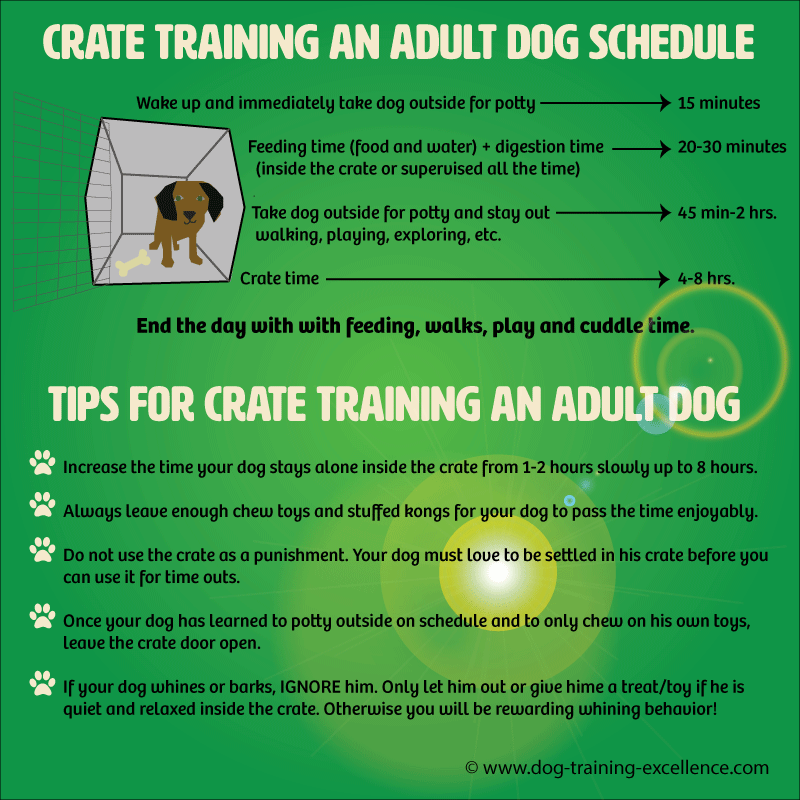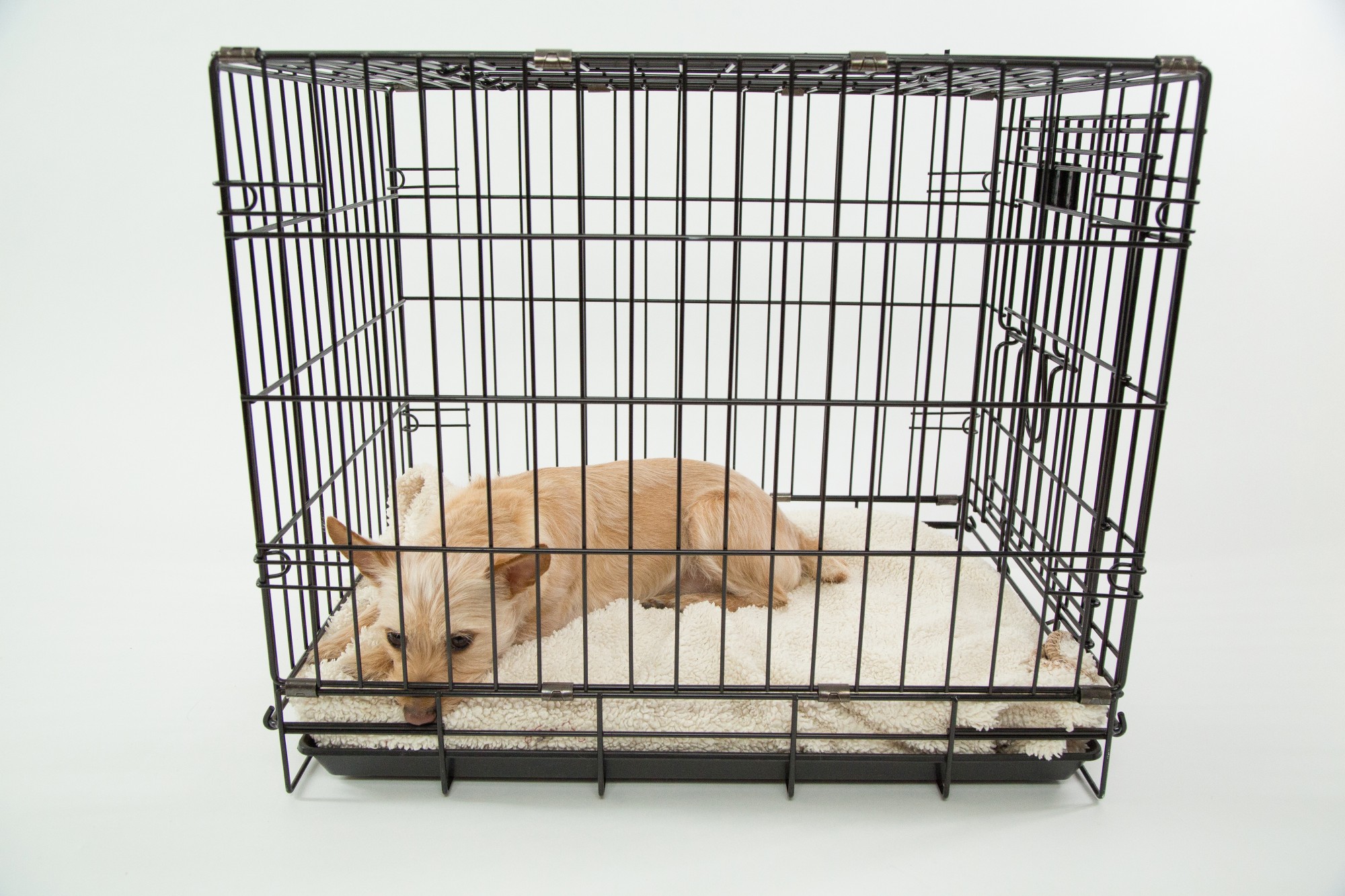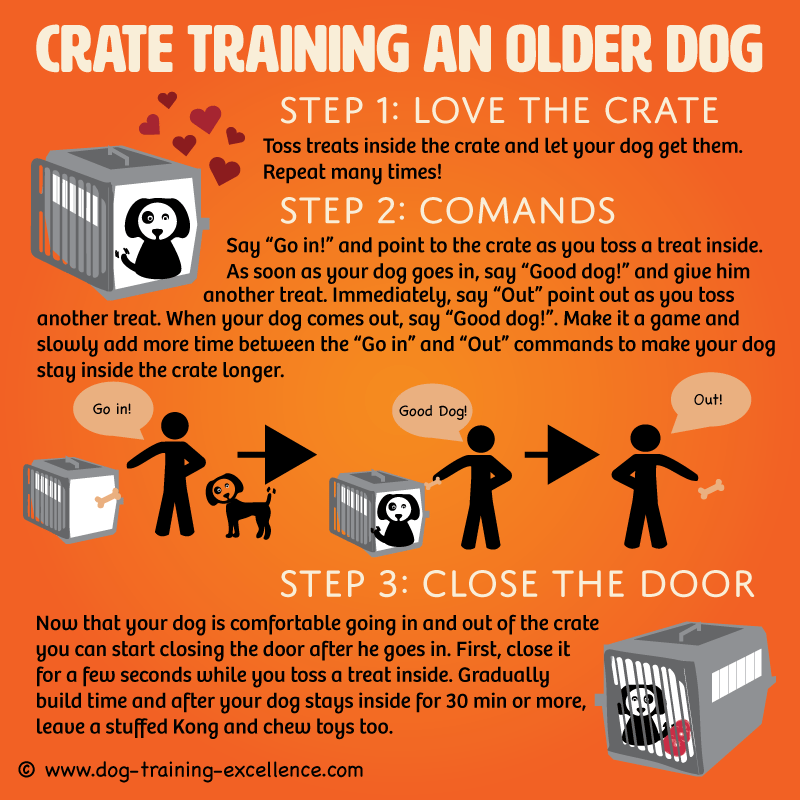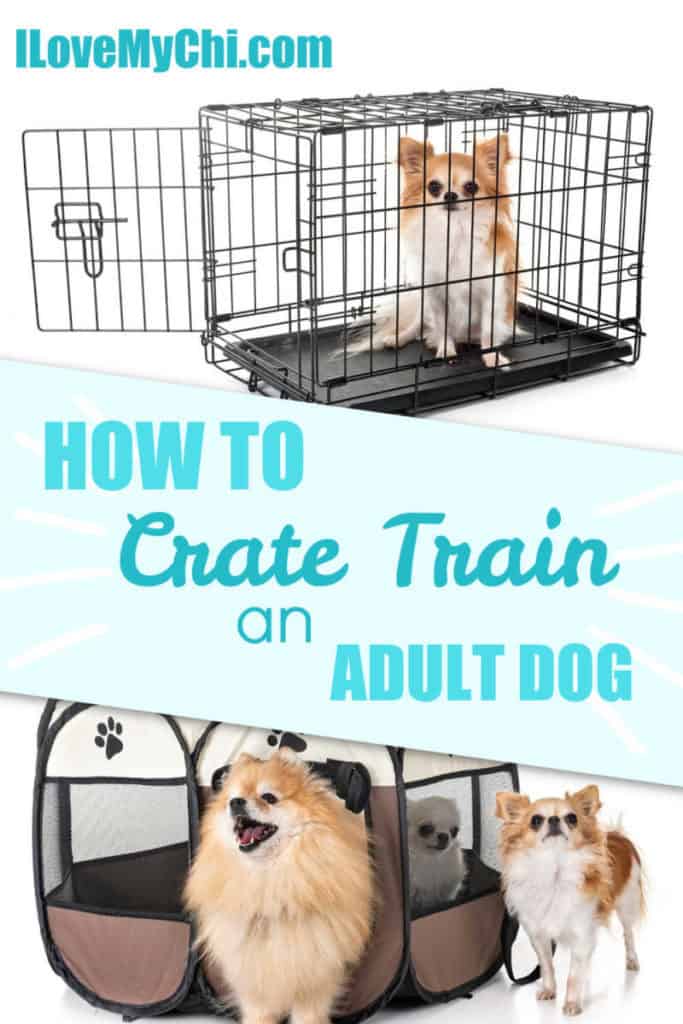how to crate train an adult dog
How to Crate Train an Adult Dog
Crate training is a valuable tool for housetraining your dog, managing separation anxiety, and providing a safe and secure space for your dog to relax. While crate training is often associated with puppies, it can be just as effective for adult dogs.

In this article, we will discuss the benefits of crate training an adult dog, how to get started, and common problems to watch out for.
Benefits of Crate Training an Adult Dog
There are many benefits to crate training an adult dog, including:

- Housetraining: Crate training can help to speed up the housetraining process by teaching your dog to associate the crate with going to the bathroom. When your dog is inside the crate, they will be less likely to eliminate because they do not want to soil their sleeping area.
- Separation anxiety: Crate training can help to reduce separation anxiety by providing your dog with a safe and secure space to retreat to when you are not home. When your dog is crated, they will be less likely to bark, whine, or destroy furniture out of boredom or anxiety.
- A safe space: A crate can provide your dog with a safe and secure space to relax and unwind. When your dog is feeling stressed or overwhelmed, they can go to their crate to get away from the hustle and bustle of everyday life.
How to Get Started Crate Training an Adult Dog
Crate training an adult dog is a relatively simple process, but it does require some patience and consistency. Here are the steps involved:

- Choose the right crate for your dog. The crate should be big enough for your dog to stand up, turn around, and lie down comfortably. You should also make sure that the crate is made of a sturdy material that your dog cannot chew through.
- Introduce your dog to the crate gradually. Start by placing the crate in a quiet area of your home and letting your dog explore it on their own. You can also put some of your dog's favorite toys or treats in the crate to encourage them to go inside.
- Once your dog is comfortable going inside the crate, start closing the door for short periods of time. Gradually increase the amount of time that you leave your dog in the crate until they are able to stay there for several hours at a time.
- Never use the crate as a punishment. The crate should be a positive place for your dog to go, so never use it to punish them or to isolate them from the family.
- Be patient and consistent with crate training. It may take a few weeks or even months for your dog to fully master crate training, so be patient and consistent with your training methods.
Common Problems with Crate Training
There are a few common problems that people encounter when crate training their adult dogs. Here are some tips for dealing with these problems:

- Your dog barks or whines when they are in the crate. If your dog barks or whines when they are in the crate, try ignoring them. Do not give them attention for barking or whining, as this will only reinforce the behavior. Eventually, your dog will learn that barking and whining will not get them out of the crate, and they will stop doing it.
- Your dog eliminates in the crate. If your dog eliminates in the crate, make sure that the crate is big enough for your dog to comfortably turn around and lie down. You should also take your dog outside to go to the bathroom before putting them in the crate. If your dog eliminates in the crate after you have taken them outside, clean the crate thoroughly and start the crate training process over again.
- Your dog refuses to go into the crate. If your dog refuses to go into the crate, try making the crate more appealing by putting some of their favorite toys or treats inside. You can also try feeding your dog in the crate. Once your dog is comfortable going inside the crate, start closing the door for short periods of time. Gradually increase the amount of time that you leave your dog in the crate until they are able to stay there for several hours at a time.
Crate training an adult dog can be a great way to improve their behavior and make your life easier. By following these tips, you can help your dog to learn to love their crate and to use it as a safe and secure space.

Additional Resources


- The American Kennel Club's guide to crate training
- The Humane Society of the United States' guide to crate training
- [Pawsitive Training's guide to crate training](https://www.paw
Thank you for exploring our website by how to crate train an adult dog. Your presence fuels our commitment to excellence. Come back for a more enriching experience!
